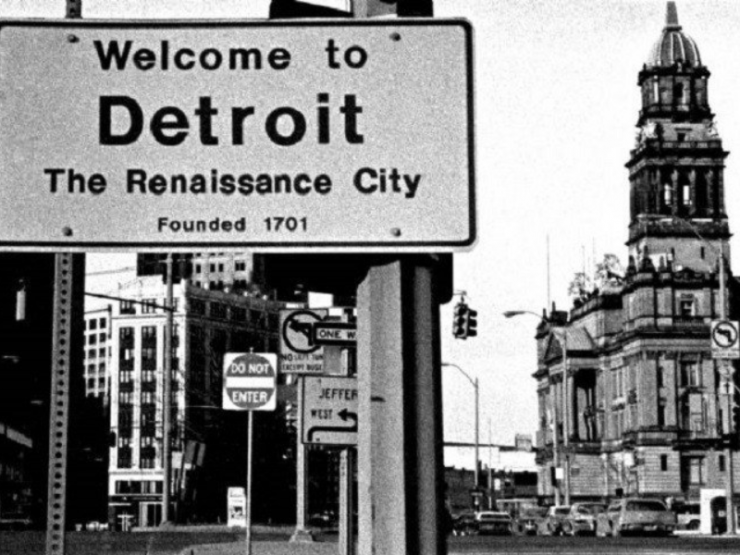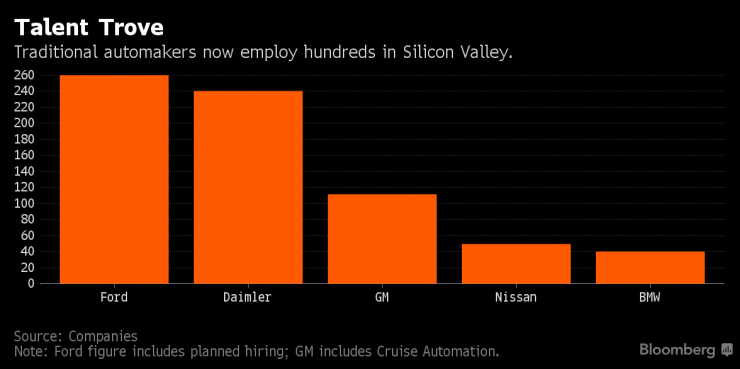
The "City of Cars" Detroit old state clock, "Entrepreneurship Holy Land" Silicon Valley is full of vitality.
The two places are separated by thousands of miles, but now they often have the same frame. When it comes to the origin, it is bound to be inseparable from the "car", and then fine, it is "unmanned."
Detroit is famous for its top three depots: General Motors, Ford, and Chrysler. The ultimatum for the declining automotive industry in Detroit was released in 2009. Four years later, the city was also declared bankrupt. Now that General Motors has been reborn from Nirvana after bankruptcy; Chrysler has also changed its name to change its name; Ford is hard to find in the past. The way to write stories needs to be changed, and the auto industry needs "Think Different".
Responding to the tougher challenges of the future and defending the reputation of Detroit as a “car city,†they need a shotgun.
This needle is the driverless driver they believe.
The three major depots boarded the ship sooner or later, for themselves, (for feelings) also for Detroit.
Where is the technology? Where is the talent? The three are collectively pointing to Silicon Valley . Of course, Detroit doesn't attract talent. It's just that Silicon Valley is still the “place†for programmers, developers of autonomous driving algorithms, and new traffic business modelers.
The good show of robbing people for technology has been staged...

In the late 1990s, GM was equipped with the Onstar smart communication system on some of its models: satellite navigation, early warning car accidents, remote control doors, and simple in-car entertainment. This is the early form of the car networking, and it is also an important part of the future unmanned era.
Later, GM's many actions in Silicon Valley are proving its ambitions in maps, big data, and new modes of transportation business.
In the two years prior to the announcement of bankruptcy, General Motors insisted on investing in research in the field of automated driving, although it has been losing money. In 2007, a reliable unmanned self-driving car was developed: it can automatically complete the on-street parking action. It can be determined by the computer on the long-distance route to the target after no-remote control or driving. The car was also favored by the U.S. Department of Defense.
The early exploration of the car networking technology and driverless technology laid the foundation for the reorganization of GM after the reorganization.
In September 2014, General Motors took out two new technologies: the Super Cruise automatic driving system and the V2V vehicle interaction system; it will also launch the first car that can communicate with each other in the next two years to avoid traffic accidents and alleviate traffic congestion. - This is the mission of large-scale commercial use of driverless cars in the future.
This step by step, GM's real big move in the first quarter of 2016:
In January, General Motors invested 500 million U.S. dollars in the Lyft taxi software company Lyft, which will use the money in conjunction with the former's R&D technology to create a car sharing service based on the technology.
Lyft, Uber, and Drop are the same arrays of Internet travel platforms that will be the future of Detroit automakers’ sales of unmanned products. Of course, this is only a possibility. It is not known what kind of business model the two parties will develop... There may be exploration of map services, big data, and new transportation business models. Sources said that Ford executive chairman Bill Ford had also participated in Lyft's early financing, but that was only personal behavior.
In March, General Motors announced the acquisition of Cruise Automation, a San Francisco self-driving car startup.
This is a company that focuses on autonomous driving. The emergence of this start-up company stems from the idea of ​​converting a manned car into a self-driving car. Most of the talent in the team is from MIT, and its vice president is Andrew Gray, chief engineer of Tesla's automated navigation software.
Although these technologies and talents cannot be packaged to bring Detroit, they are enough to reinforce GM’s strength in the driverless field.
Ford is radicalFord is particularly aggressive compared to GM. Take a big step towards a truly "Silicon Valley Fan" technology company.
Ford Motors established an innovative research center located in Palo Alto, where there are many competitors. Recently, Ford will also expand the scale of the Innovation Research Center, with particular reference to attracting more unmanned drivers in Silicon Valley.
"Ford is not just a car manufacturer, but also a smart mobile technology research and development company, and we strive to bring innovation to every aspect of our business," said Mark Fields, president and chief executive officer of Ford Motor Company. “The completion of this new research center shows that Ford has always been committed to becoming a part of the Silicon Valley innovation ecosystem, meeting consumer aspirations and needs in connection with car connectivity, mobile travel and autonomous driving. Our goal is to make these new technologies possible. Benefit everyone, not just luxury consumers."
In January 2015, Ford dug up pre-Apple engineer Dragos Maciuca to lead its innovation and research center, and more Silicon Valley technical talents entered Ford's arms...
The recent investments and acquisitions of four other drone-related software technology companies further illustrate Ford’s desire for technology and talent and its ambition for the future of unmanned vehicles.
Although there is fierce chase and strong yearning for Silicon Valley, Ford's background as a Detroit auto company cannot be changed.
Chrysler is slightly low-keyCompared with the former two, the current Chrysler has caused its Detroit temperament to be compromised because of the admission of Fiat cars in Italy. The new seventh-placed Fiat-Chrysler (FCA) has far fewer moves in the unmanned area, but it is not small.
Google and Fiat-Chrysler Motors announced on May 3 that they will cooperate in the field of self-driving cars. Google will use 100 prototypes based on the Chrysler MPV model Pacifica to increase the scale of its autopilot fleet. Fiat will Cooperated with Google to develop autopilot technology.
Many people suspect that Google is not on the wrong team. However, compared to GM and Ford, the cooperation between the two is regarded as synonymous: Google's technology and data resources and the traditional vehicle-building technology owned by FCA are all lacked by each other, and such information sharing is on both sides' appetite.
Although there is no obvious flow of talent, this cooperation method is enough to make this car factory excited for some time.

Data shows that currently Ford has absorbed nearly 260 R&D talents in Silicon Valley and 120 in GM. Although Fiat-Chrysler has no specific data, it must not be low.
In addition, Google’s driverless R&D team has many members from GM, Ford, and Chrysler. This kind of situation in which you have me and I have you will continue.
On the surface, Silicon Valley is an enemy of Detroit; Lizi is a friend. In the end, it should also be a friend.
Detroit self-improvement
Of course, the revival of a city cannot be handed over to several depots, and the governor of Michigan does not want to sit still.
Rick Snyder said that Google will set up an autonomous vehicle research and development center in the suburbs of Detroit, and an automotive technology company will also have its North American headquarters nearby.
He also stressed that Michigan has a wealth of resources for technology companies, especially the automotive industry; software and technology development is the strength of the University of Michigan, providing talent and education systems that any company can use; automotive companies and technology companies can use the University of Michigan Mcity test autopilot car. In addition, the cost of living and conducting business in Michigan is much lower than in California, especially in the case of rapidly rising real estate prices in Silicon Valley.
The three major automakers acquire driverless technologies by establishing R&D centers in Silicon Valley or acquiring Silicon Valley technology teams. Detroit and even Michigan are all facilitating the development and testing of driverless cars. Detroit's path to revitalization It is worth looking forward to, at the same time, the entire American automobile industry will also benefit from it.
Please pay attention to the “New Ideas Drive†section of Lei Feng Net (search “Lei Feng Net†public number) and add “New Ideas Drive†to the public number on WeChat.
